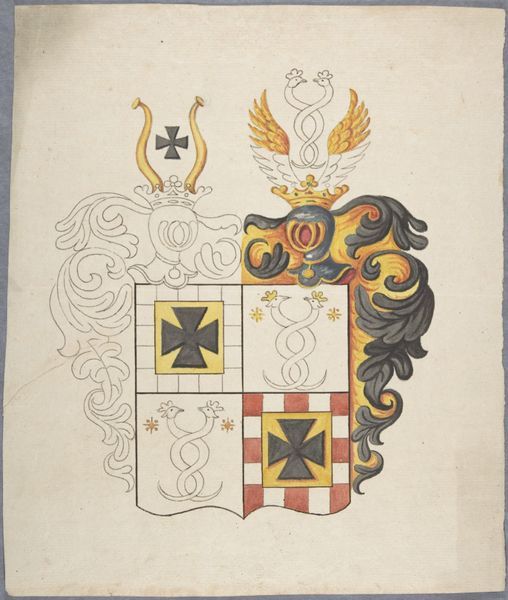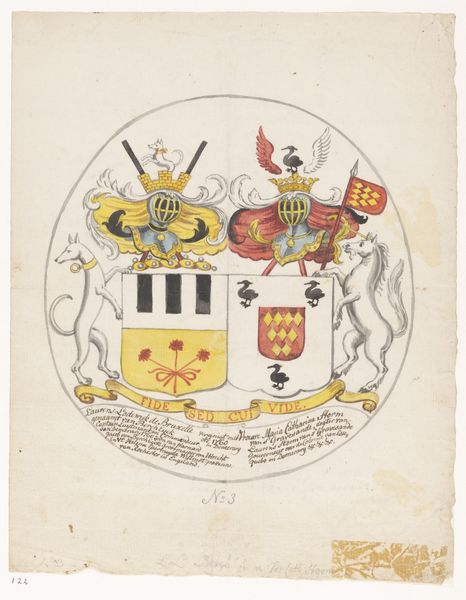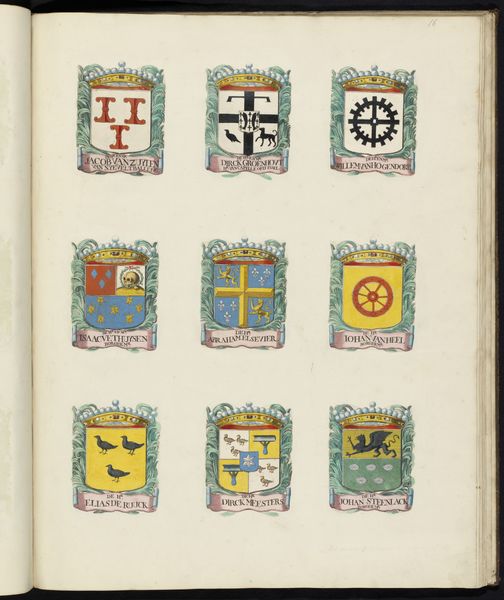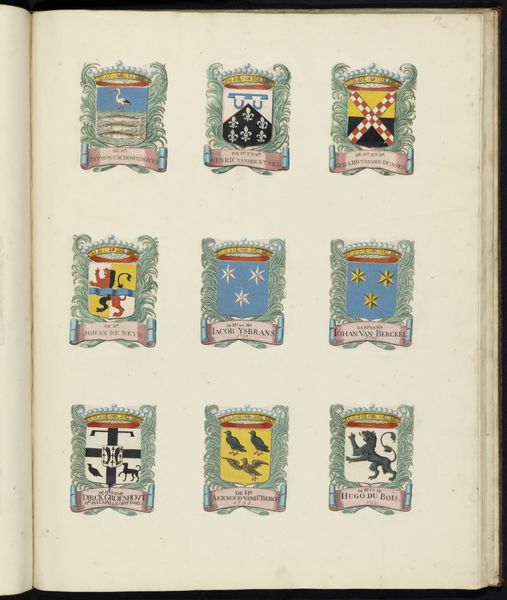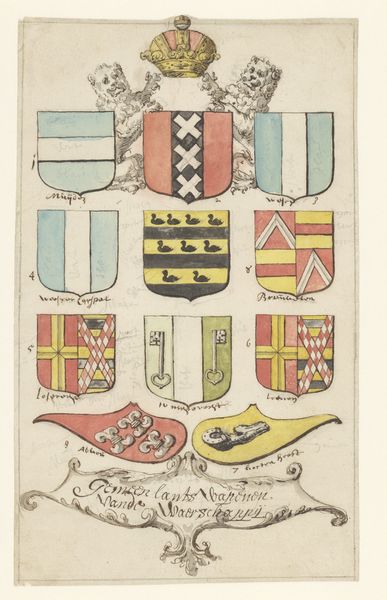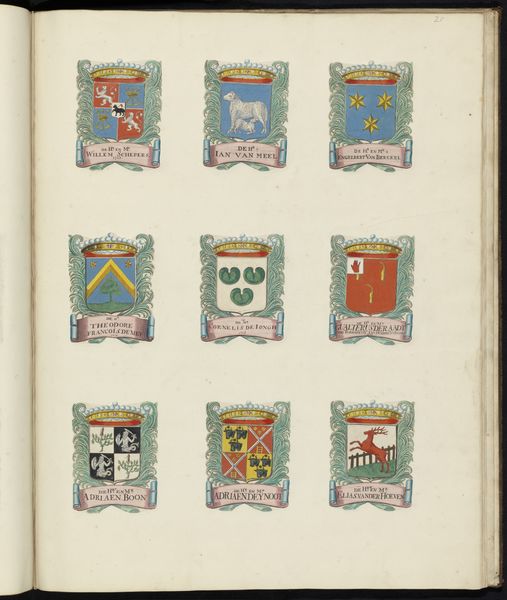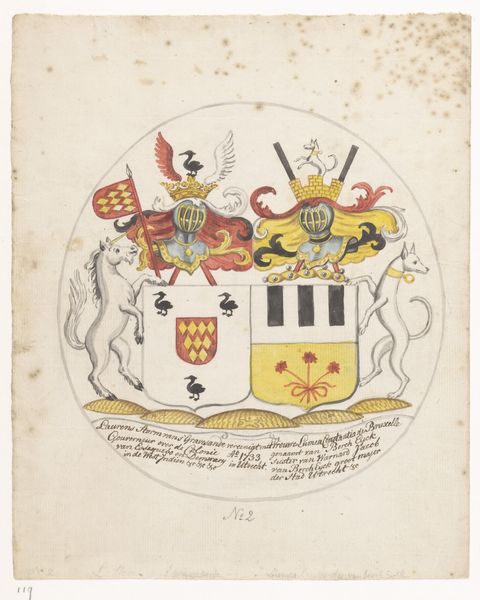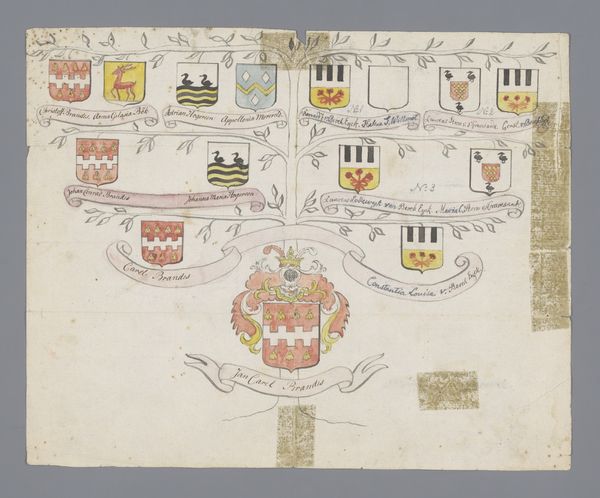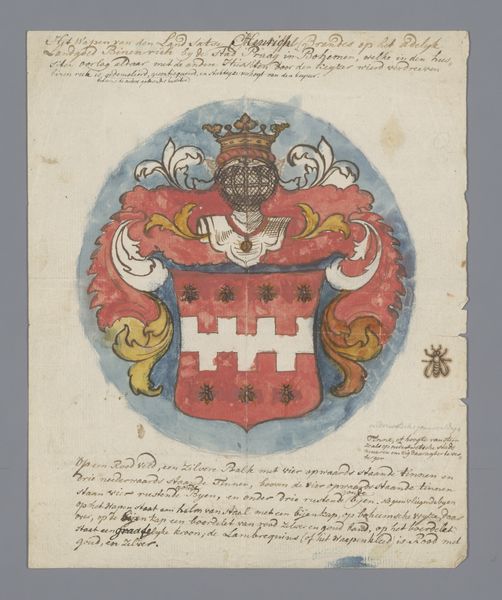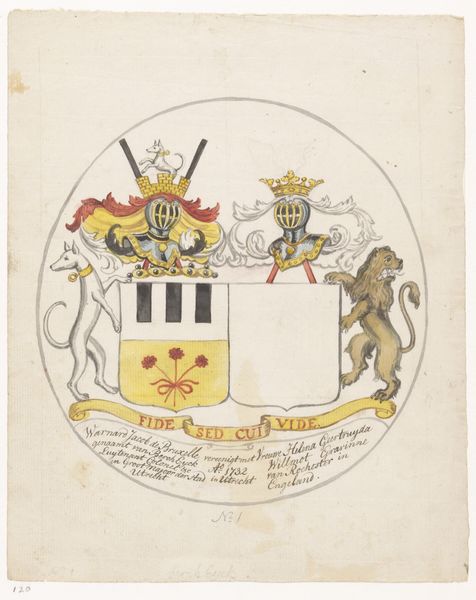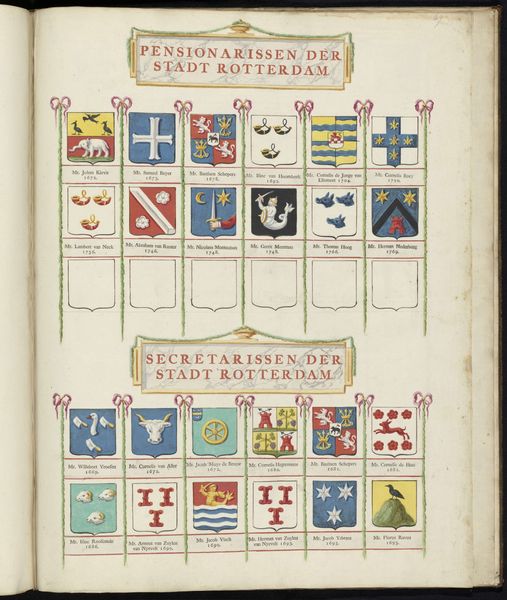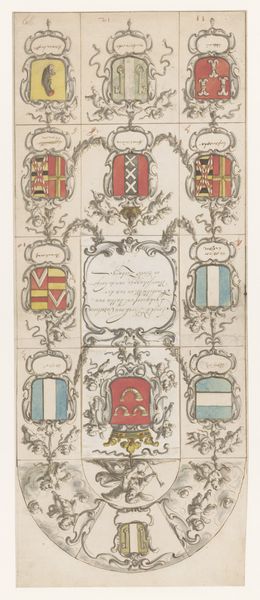
drawing, graphic-art, print, paper
#
drawing
#
graphic-art
# print
#
paper
Dimensions: height 234 mm, width 140 mm
Copyright: Rijks Museum: Open Domain
Curator: What an array! My initial reaction is these flags possess a sense of solemn civic duty, a quiet authority rendered in miniature. Editor: Today we’re looking at “Banieren van de erewachten van Walcheren, 1862” a graphic print on paper, by Jan Frederik Schütz. It depicts, as the title suggests, several banners from the guard of honor of Walcheren. The work’s production year, however, is listed as 1843, so there seems to be a historical disjunction there. Curator: Disjunctions can often be the source of productive inquiry! Who were these honor guards, and what intersectional social roles did they serve during that specific moment of Dutch history, somewhere between the Napoleonic era and burgeoning modernity? What does it say about the identity and aspirations of Walcheren at the time? Editor: The variations in material tell us a great deal about social production. You’ll note that they range from fairly elaborate to rather simple, perhaps revealing disparities within the community in terms of access to labor and materials. How were they made? What kind of craftspeople produced these works? These are central aspects of my understanding. Curator: I wonder, what specific power dynamics are at play when visualizing the hierarchy this way, given these banners may represent varying degrees of influence and agency in their own societal context? Editor: I see these designs as very specific examples of a form—banners are both utilitarian and decorative—speaking volumes about social order and hierarchy, but on the whole, this graphic illustration serves as an archive of practical design as it served its purposes. I’m particularly intrigued by the range of their condition: we can clearly perceive wear and use, telling us of the work that has happened during this period. Curator: For me, it evokes not only the power structures intrinsic to that time, but also questions of national and regional identity, and the social expectations that these guards may represent for individuals. What about its aesthetic value in our own time? Can such iconography transcend the confines of its original intent? Editor: I believe by looking at it we understand not just its formal elements, or just the role of the banners, but rather at the time of making the item, or as an art piece within a book and that its significance extends far beyond what may have been thought, at the time it was made. It makes us wonder what we make will be considered, far past the current era. Curator: Absolutely, thinking about those historical roots—while examining this almost quaint visual catalog—allows us to ask probing questions. Editor: Indeed, these are valuable clues, encouraging us to unravel the intricacies of these unique banners.
Comments
No comments
Be the first to comment and join the conversation on the ultimate creative platform.

